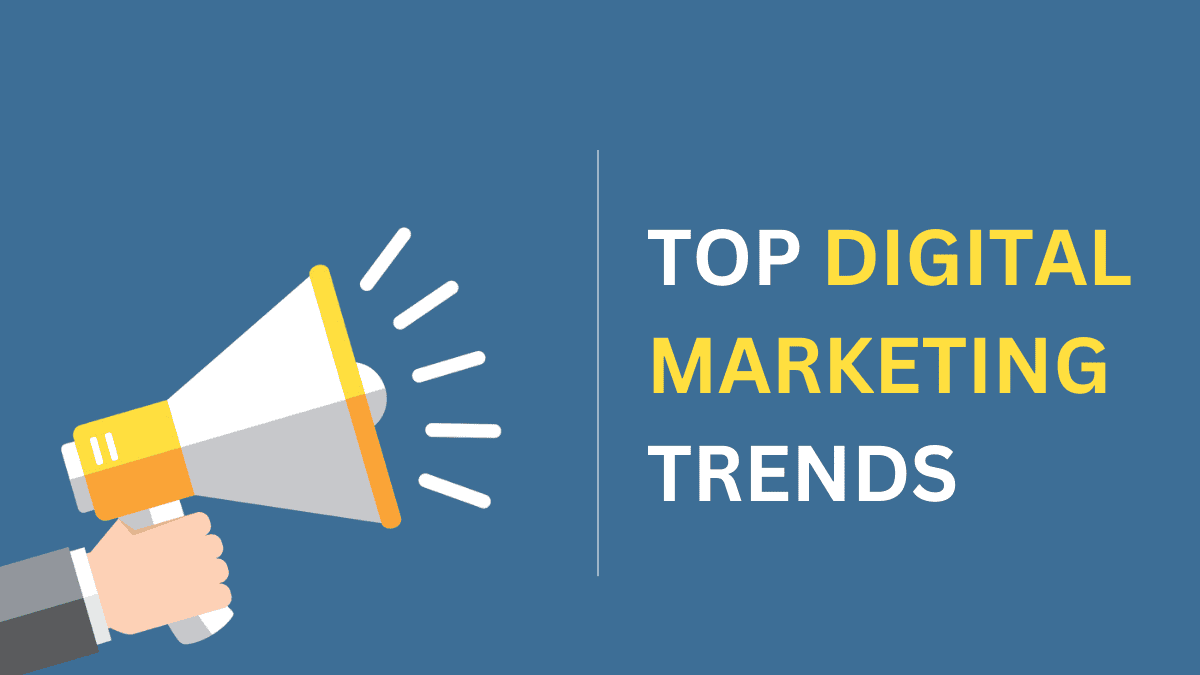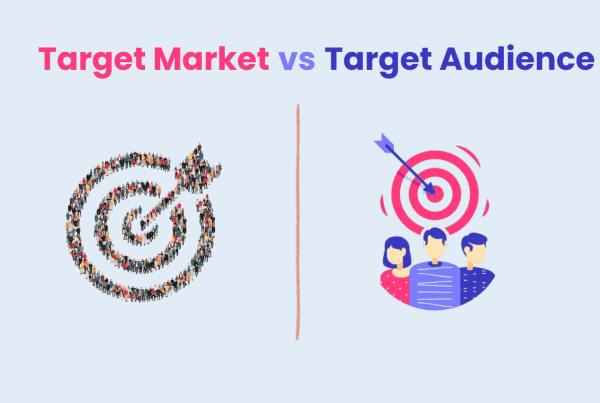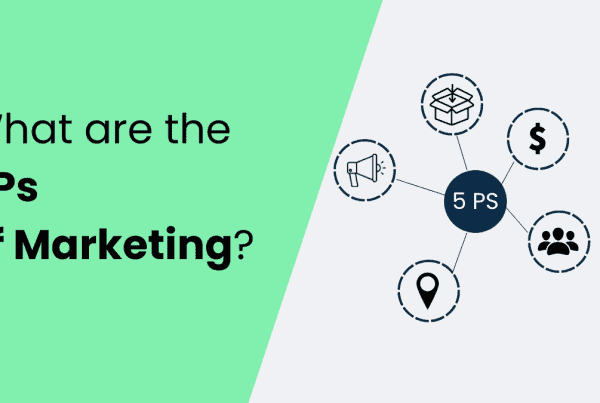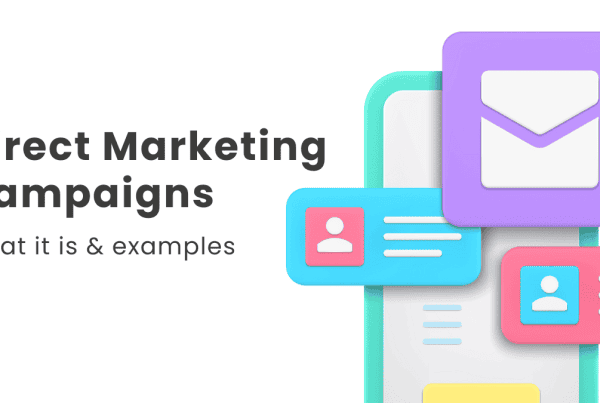
2024 is almost halfway through, but there’s still time to review and improve our plans for the rest of the year. Digital marketing is changing fast. For businesses and marketers, keeping up is essential. New technologies, changing consumer habits, and shifting social media rules mean we must stay informed and proactive. This year, important digital marketing trends are changing how brands connect with people online.
For marketers, it’s important to know the big changes affecting strategies and tactics in the industry. Knowing these changes helps them stay competitive and reach their audiences effectively. That’s why we’re here to talk about the current digital marketing trends.
These digital marketing trends will show how things are changing, what new opportunities are coming up, and how marketers can adjust their strategies to stay ahead. Understanding these trends is key to creating successful campaigns and making smart decisions that boost growth and engagement.
Current Digital Marketing Trends in 2024
Here are the top digital marketing trends in 2024:
The AI Revolution is Changing Marketing
Over the past year, interest in AI and the use of AI tools has skyrocketed. AI tools have been used in content writing, SEO, social media marketing, and almost everywhere in digital marketing. It is significantly impacting job markets, especially in content writing and copywriting.
According to a 2023 HubSpot survey, traffic to AI-related websites increased by 1,000% in 2023, showing rapid AI adoption. Additionally, 90% of marketers find AI tools help them complete routine tasks more efficiently, and in 2024, it increased further when more advanced and appealing AI tools were launched.
The same survey report states that 48% of marketers are using AI tools to create content, 45% are using AI to analyze marketing data for better decisions, and are 38% using AI to automate SEO tasks for more efficient work.
According to MS Power Users, 73% of marketing executives have already adopted AI at their companies. Additionally, Authority Hacker states that 75.7% of digital marketers now use AI tools for work, and 49.5% of them use AI tools multiple times per week or more.
AI is boosting productivity, letting marketers focus on more important tasks. As AI gets more involved in handling data, marketing is expected to become more dynamic and centered on users.
According to SemRush, artificial intelligence is changing the job market, with postings for roles like “copywriter” and “content producer” dropping by over 70% from 2022 to 2023. Marketers need to adapt to the changes, as AI becomes more important in business strategies and customer engagement.
AI helps businesses reach the right people, customize their services, and understand data better, which leads to customer interaction and higher profits. For example, Arduino uses Twilio’s CustomerAI, and Footasylum uses Peak.AI, both have greatly enhanced their marketing efforts.
Research from McKinsey shows that using AI to create personalized experiences while protecting customer privacy can cut acquisition costs by up to 50% and increase marketing efficiency by up to 30%.
First-party and zero-party data: the new norma
Due to privacy rules and the phasing out of third-party cookies, marketers are now focusing more on first-party and zero-party data. First-party and zero-party data are becoming the top choices for data-driven marketing.

Here, First-party data (FPD) is collected directly from your channels, like your website or mobile apps, with the consent of prospects or customers. Examples include web activity, demographic info, purchase history, emails, sales interactions, call center calls, customer feedback, and behavior data.
On the other hand, Zero-party data (ZPD), or zero data, is information that customers willingly share with brands, often through surveys, forms, or preference centers. Examples include preferences and interests, purchase intentions, feedback and opinions, personal info, and event participation.
This shift marks a big change in how marketers collect and use data. Businesses are now focusing on building trust with customers and encouraging them to share their information directly.
This trend highlights the importance of transparency and value exchange–customers are more likely to share their data if they believe it will improve their experience with a brand.
Advances in Technology Are Blurring Digital and Physical Realities
Advancements in technology are merging the digital and physical worlds, providing new marketing opportunities. IoT devices increased by 16% last year, with over 29 billion expected by 2027. According to Semrush, visits to IoT-focused websites grew by 19% in two years, particularly in smart home and smart city technologies.
Consumer interest in AR and VR is growing, with searches for VR products increasing dramatically. AR and VR enhance marketing experiences, with AR experiences boosting e-commerce conversion rates by 40%.
Location-based marketing and immersive AR/VR experiences are revolutionizing customer engagement. Brands like Timberland and Whole Foods are personalizing interactions using geo-location data, while Etsy and Ralph Lauren enhance e-commerce experiences with AR and VR.
Businesses and marketers should create engaging, immersive experiences using AR and VR platforms. Some known ones are Auglio, Obsessar, and Shopify’s virtual scanner. They can use these platforms to stay up-to-date with the digital marketing trends and updates, which will grab more attention and provide a wide reach.
Attention Metrics: A New Way to Measure Ad Impact
In digital marketing, attention metrics are emerging as a key way to measure ad impact, as traditional metrics like clicks and impressions are no longer enough.
Attention metrics provide deeper insights into user interaction with ads, measuring view rate, average seconds users look at the ad, and APM (Average seconds of attention per 1000 impressions).
These metrics offer a more detailed understanding of advertisement’s effectiveness, helping marketers optimize campaigns for genuine consumer attention, not just surface-level interactions.
By focusing on attention metrics, brands can better assess and measure the impact of their campaigns and improve creative strategies in awareness campaigns.
Nano-Influencers vs. Macro-Influencers: Authenticity and Engagement
According to Statista, In 2024, the social media marketing market is expected to hit a record high of 24 billion U.S. dollars. Marketers have many social media platforms and influencers to pick from to connect brands with consumers.

However, nano-influencers have started getting more attention than others. Creators with over 500,000 followers are called mega-influencers. Those with 100,000 to 500,000 followers are macro-influencers. People with 10,000 to 100,000 followers are micro-influencers, and those with less than 10,000 followers are known as nano-influencers. The good news is that influencer marketing is shifting towards nano-influencers.
Nano-Influencers vs Macro-Influencers
- Authenticity: Nano-influencers are seen as more authentic and relatable, with closer connections to their followers.
- Engagement: Nano-influencers have higher engagement rates as their followers are more interested in their content.
- Cost-Effectiveness: Nano-influencers are more affordable, often sharing posts for lower budgets or even free.
Brands use nano-influencers for their genuine connections and trust with followers.
Consumers Value Authenticity, Social Good, and Ongoing Relationships
In 2024, integrating user-generated content (UGC) into advertising campaigns has become one of the most powerful digital marketing trends. UGC includes photos, videos, blog posts, comments, and social media posts created by customers. This type of content is seen as more authentic and trustworthy compared to traditional brand-created content, resonating strongly with audiences seeking genuine experiences.
- Higher Conversion Rates: User-generated photos are five times more likely to convert customers than non-user-generated content. According to 3dcart, 70% of people consider UGC ratings before making a purchase, making it essential for ad campaigns.
- Building Credibility and Community: Incorporating UGC into campaigns enhances credibility and fosters a sense of community and connection between the brand and its audience. It encourages customer participation and engagement, turning customers into brand advocates.
Consumer Values and Authentic Engagement:
- Authenticity and Social Responsibility: Today’s consumers prefer brands that align with their values and demonstrate social responsibility. According to Semrush, traffic to sustainability-related pages grew by 187% from 2022 to 2023.
- Direct-to-Consumer Models: According to UBS Global, the subscription economy is expected to reach an astounding $1.5 trillion by 2025. Brands like Patagonia and Ben & Jerry’s use storytelling about social responsibility to build trust.
- Preferred by Gen Z: According to Get Flow Box, 61% of Gen Z prefers UGC, so marketers should leverage it to build authentic connections.
By actively encouraging and curating user-generated content, brands can enhance authenticity, build trust, and foster strong community connections.
The Continuous Rise of Connected TV
Connected TV (CTV) advertising is growing as more consumers use streaming services. CTV ads are delivered via internet-connected devices, offering new ways for advertisers to reach audiences with engaging and interactive formats.
Benefits of CTV advertising:
- Precision with audience-based targeting
- Cookie-less environment
- 100% in-view placement as it’s full screen
- High completion rates between 90-100%
- Retargeting across mobile, desktop, and TV
CTV ads provide high-quality, immersive experiences, allowing brands to connect more effectively with viewers.
Capturing Attention in the Evolving Digital Content Landscape
Capturing attention quickly with shorter video ads has become essential. With attention spans shrinking, according to hubble, over 25% of adults admit they stop watching a video within the first 10 seconds. This trend has led brands to create engaging, concise video content.
- Higher Completion Rates: Shorter video ads generally have higher completion rates and are more memorable. Viewers, especially on mobile devices, are more likely to watch a short ad to the end.
- YouTube Strategy: On YouTube, brands focus on ultra-short, engaging ads to avoid the “skip” button that appears after 6 seconds. This means prioritizing brevity and impact in video content strategies to deliver key messages quickly.
Evolving Content Consumption:
- Streaming and Short-Form Video: YouTube streams over 1 billion hours of video daily, with short-form video leading the way in 2024. The over-the-top (OTT) video market is expected to reach $316.4 billion in 2024.
- Podcasts: Podcasts are also a growing advertising opportunity, with the industry projected to exceed $100 billion by 2030.
- Social Media and Commerce: Platforms like TikTok and Instagram are crucial for product discovery and sales. Brands like ColourPop Cosmetics successfully use these platforms for marketing.
To maximize opportunities, brands can enhance social commerce strategies using tools like catalog syncing, shoppable posts, and live shopping.
The digital content landscape is rapidly evolving, with a shift towards streaming, podcasts, and short-form video. By adapting to these changes and focusing on concise, impactful content, brands can capture attention quickly and effectively in a crowded market.
Weather Ads: The Weather Activation Platform
Weather-based advertising is rising, with platforms like WeatherAds triggering ads based on weather conditions.

Weather ads can appear on websites, mobile apps, and social media. Advertisers use weather data to create ads tailored to conditions like rain, sunshine, and temperature changes.
This approach offers timely and relevant marketing, connecting with consumers based on their current environment. These ads are more effective in the fashion industry because brands can suggest products according to the weather and the impact of timely ads will be great.
Lifestyle-related Technologies Drive Industry Change
Technologies in banking, education, and gaming are reshaping daily life and marketing strategies. Digital-first banking platforms saw a 51.5% increase in traffic in 2023. These technologies make financial services more accessible and create new marketing opportunities.
Online education is popular, with visits to corporate e-learning platforms increasing by 12% year over year. The corporate e-learning market is projected to reach $550 billion by 2030.
Traffic to the gaming industry domains increased by 27% last year. According to bcg.com, the gaming industry is expected to generate $282.3 billion in 2024, presenting vast marketing opportunities.
Locala: Power of Location Targeting
Platforms like Locala help businesses use location targeting to reach their audience with relevant and effective marketing campaigns.
Locala integrates various data sources to pinpoint users’ physical locations, creating specific audience segments based on location.
These platforms work seamlessly across multiple digital advertising channels, making them effective for businesses with physical stores or those targeting local markets.
Meta’s Threads Is Becoming A New Communication Avenue for Engaging Conversations
Meta introduced Threads in July 2023, aiming to facilitate more personal and engaging conversations between brands and their audiences. This platform allows businesses to post Messages up to 500 characters long, along with links, photos, and videos for up to 5 minutes, using their Instagram account. Threads enable deeper connections with customers through community-driven discussions and personalized interactions.
With 100 million monthly users, threads is emerging as a significant platform, especially after its recent launch in the European Union. It’s considered a rival and alternative to X, primarily used for sharing text updates and participating in public conversations.

Brands should establish a presence on Threads, even if it’s just securing a username, as user numbers are expected to rise in 2024. It’s recommended to research and observe how brands like Canva, TedTalks, and Channel 4 are leveraging the platform. This presents an excellent opportunity for experimentation.
Alison Battisby from Avocado Social observed a recent surge in engagement on Threads, indicating that many are creating profiles on the platform in anticipation of the coming year. Brands are finding success by initiating conversations, asking questions, and sparking discussions.
Another expert tip emphasizes the importance of prioritizing in-platform conversations and discussions over directing traffic to external websites through Threads. Brands like Canva, TedTalks, and Channel 4 thrive on Threads by engaging users with questions and discussions, aligning with the preferences of Threads users.
Instagram’s Reminder Ads Enhance Engagement
Starting in October 2023, Instagram introduced Reminder Ads, allowing businesses to promote events, products, or launches and remind users about them.

Instagram Reminder Ads show up in Instagram feeds and Stories with a “Remind Me” button. When users click it, they get a notification on the event or launch day. Reminder ads can be in the form of posts or reels.
This feature helps marketers keep their audience engaged and informed, boosting anticipation and participation in events or product releases.
LinkedIn Leads in Organic Reach
LinkedIn is taking over in terms of people seeing your posts without you having to pay for them. It now has a whopping one billion members worldwide. That’s a big change from when it was mainly used for finding jobs!
It is well predicted that there will be a lot more people interacting with posts on LinkedIn without needing to pay for it. This is pretty unusual for social media these days.
It has been observed that LinkedIn users are updating their LinkedIn profiles with more than just work stuff – they’re sharing advice, supporting others, talking about mental health, and giving leadership tips.
You can also switch to ‘Creator Mode’ on your LinkedIn profile, which makes your profile better and gives you more tools to use. And if you’re paying to promote something, videos seem to be the most popular type of ads on LinkedIn.
Explore Beyond the Search box
Google Search is 25 years old now, and it’s evident that we’ve moved far beyond typing text into a box and getting a list of web pages.
Nowadays, people search using their voice (experts predict 8.4 billion voice assistants by 2024) and images (Google Lens sees 12 billion monthly searches). The traditional text-box search is evolving, with generative AI changing how information is organized, and new filters like perspectives highlighting diverse experiences.
There’s also multisearch, where people can use images and text at the same time, making Search more natural and intuitive, breaking down barriers, and giving marketers tools to reach more people.
In 2024, according to Cova Sota Senior Director of Marketing and Country Marketing Manager of Spain & Portugal, Google, marketers need to think about how consumers search for information and provide clear answers in each channel. For instance, update your Google Business Profile for Google Assistant to deliver the best response to voice queries. Also, add precise product data and top-quality images to the Merchant Center to help AI in visual search identify and display your products accurately.
Keeping Users Interested Is the New Goal
In recent years, marketers have noticed a decline in how much people interact with posts on social media. This could be because of things like the quality of content when it’s posted, or what device people use. In 2024, the focus might shift from just getting likes and comments to keeping users interested in what’s being shared.
People will start paying more attention to how many users stick around instead of just how many likes they get. Attention is super important nowadays because people have so many things to choose from.
To deal with this, brands are making cool social media posts that are fun, teach something, or give helpful information. The idea is to get people engaged by being fun and creative.
Many people think social media platforms are trying to help with this by testing out longer videos. For example, TikTok will let people upload videos that are 15 minutes long. They’re also focusing more on how brands can not only get people interested but also keep them watching.
AI is Now a Part of Social Media Platforms
It’s no surprise that social media marketers are using AI to boost their productivity. Tools like ChatGPT and Midjourney help them create campaign ideas and social media posts, and generate both text and images.
At the same time, social media platforms are also adding AI features. For example:
- TikTok lets you personalize your feed with AI.
- Instagram is trying out AI-generated stickers.
- LinkedIn provides premium users with AI tools for writing profiles and highlighting top job choices.
- YouTube is testing Dream Track for Shorts and Music AI tools.
However, using AI comes with risks, like privacy and ethical issues. It’s important to consider how your audience feels about AI. Do they like AI-generated content or not?
Keep an eye on new features on social media platforms and see how other brands use them successfully.
AI is Improving by Itself–and Fast
AI has been around for a while, but what’s new is that it can now improve on its own. Unlike previous technologies that needed someone to develop or update them, these AI models can learn and grow by themselves.
Brian Corish, founder of AI-focused consultancy Elemental Intelligence and DMI Global Champion, says don’t underestimate AI based on its current state. The technology is improving quickly, so reassess your AI strategy every few weeks or months.
AI is great at technical tasks and is available to everyone, but it’s not perfect. Right now, it’s at its least developed. As marketers, we should focus on our soft skills and reasoning because AI struggles with those.
Getting things done in an organization will be important in the next few years, and we need to learn how to work with AI.
Corish adds, “AI won’t take your job, but someone who knows how to use AI might. So, the goal is to co-create.”
High EEAT Content for Better Engagement
In 2024, it has been observed that businesses and reputed blogs/websites are focused on creating high EEAT (Experience, Expertise, Authoritativeness, and Trustworthiness) content that might be keeping them ahead of the small-to-mid blogs and websites. This type of content drives organic traffic, builds authority and fosters long-term customer relationships.
Why High EEAT Matters:
- SEO Boost: Google’s algorithms favor content that meets the EEAT criteria. High EEAT content improves your chances of ranking higher in search engine results pages (SERPs).
- User Engagement: Valuable content keeps users on your site longer, reducing bounce rates. Engaging content encourages social shares, comments, and repeat visits.
- Brand Reputation: Consistently delivering high EEAT content enhances your brand’s reputation, making you a knowledgeable and trustworthy source.
To leverage this, ensure experts create or provide information in your content. Make a checklist of all the EEAT signals important to your business and use it like a scorecard. Analyze how your competitors build trust and authority, then evaluate yourself against these benchmarks to identify areas for improvement.
AI in Google Ads: What to Expect in 2024
In 2024, Google will add more generative AI tools to Google Ads. While these tools can be helpful, be cautious. Since Google Ads is mainly a moneymaker, the AI might introduce biases in algorithms and ad layouts.
Cathal Melinn, Digital Marketing Director, notes that Google has been reducing user control, and shifting many tasks to AI. This means you’ll have less control over your ad visibility and performance, as AI cannot understand context and language like humans do.
Consider AI as an assistant to your strategy, not the sole solution. The Google Ads interface includes an optimization score that suggests changes like adding the display network, letting Google write your ads, using broad match, or removing keywords. Remember, Google Ads is designed to nudge you in certain directions, so make sure any changes truly benefit you.
Amy Hebdon, in her blog “Are you being manipulated by Google Ads?” advice not to blindly follow Google’s recommendations. Use your data-backed judgment for your ad campaigns. Google reps might call with aggressive suggestions, but Cathal Melinn recommends not making immediate changes based on these calls. Take your time to evaluate any suggestions carefully.
Conclusion: Current Digital Marketing Trends
2024 has been an exciting and challenging year till now for marketers. It is quite funny that on one side these technologies are helping them reduce workload and on the other side, killing job opportunities. The story will be the same for the rest of this year and beyond because AI is everywhere.
Almost everyone who is a part of this industry agrees that marketers need to embrace AI to stay effective. Even if AI hasn’t impacted your role yet, it will in the future. Start learning about AI and using its platforms now to avoid being left behind.
AI is also transforming consumer behavior, purchasing, and business operations. These digital marketing trends also show how AI and emerging technologies are dominating and are revolutionizing digital marketing, creating new opportunities for businesses to engage with consumers in innovative ways.
These current digital marketing trends are clear signs that the digital marketing field is changing rapidly and we have to adapt to these changes to not only survive but grow.



